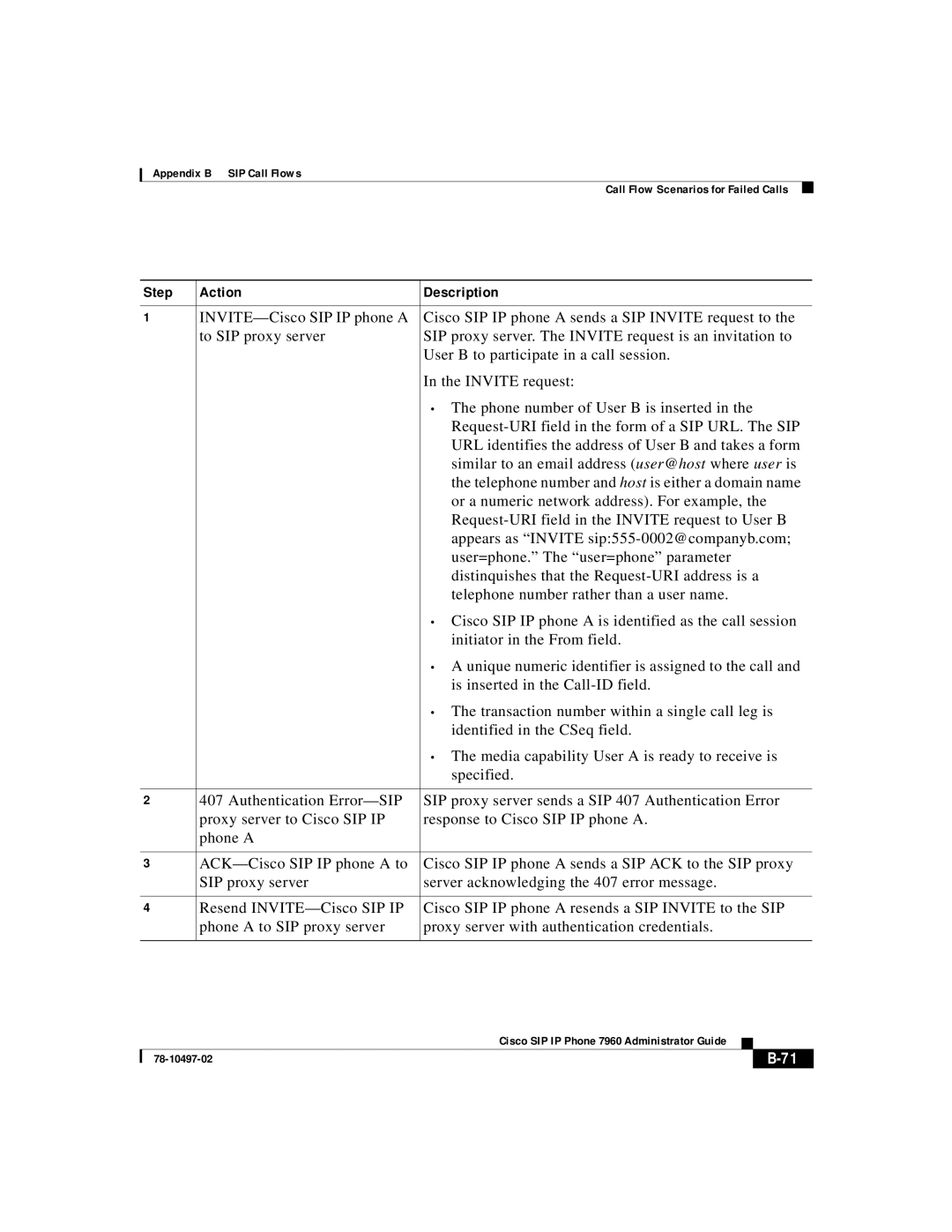
Appendix B SIP Call Flows
Call Flow Scenarios for Failed Calls
Step | Action | Description |
1
| to SIP proxy server | SIP proxy server. The INVITE request is an invitation to |
|
| User B to participate in a call session. |
|
| In the INVITE request: |
|
| • The phone number of User B is inserted in the |
|
| |
|
| URL identifies the address of User B and takes a form |
|
| similar to an email address (user@host where user is |
|
| the telephone number and host is either a domain name |
|
| or a numeric network address). For example, the |
|
| |
|
| appears as “INVITE |
|
| user=phone.” The “user=phone” parameter |
|
| distinquishes that the |
|
| telephone number rather than a user name. |
|
| • Cisco SIP IP phone A is identified as the call session |
|
| initiator in the From field. |
|
| • A unique numeric identifier is assigned to the call and |
|
| is inserted in the |
|
| • The transaction number within a single call leg is |
|
| identified in the CSeq field. |
|
| • The media capability User A is ready to receive is |
|
| specified. |
|
|
|
2 | 407 Authentication | SIP proxy server sends a SIP 407 Authentication Error |
| proxy server to Cisco SIP IP | response to Cisco SIP IP phone A. |
| phone A |
|
|
|
|
3 | Cisco SIP IP phone A sends a SIP ACK to the SIP proxy | |
| SIP proxy server | server acknowledging the 407 error message. |
|
|
|
4 | Resend | Cisco SIP IP phone A resends a SIP INVITE to the SIP |
| phone A to SIP proxy server | proxy server with authentication credentials. |
|
| Cisco SIP IP Phone 7960 Administrator Guide |
|
|
|
|
| ||
|
|
|
| |
|
|
|
